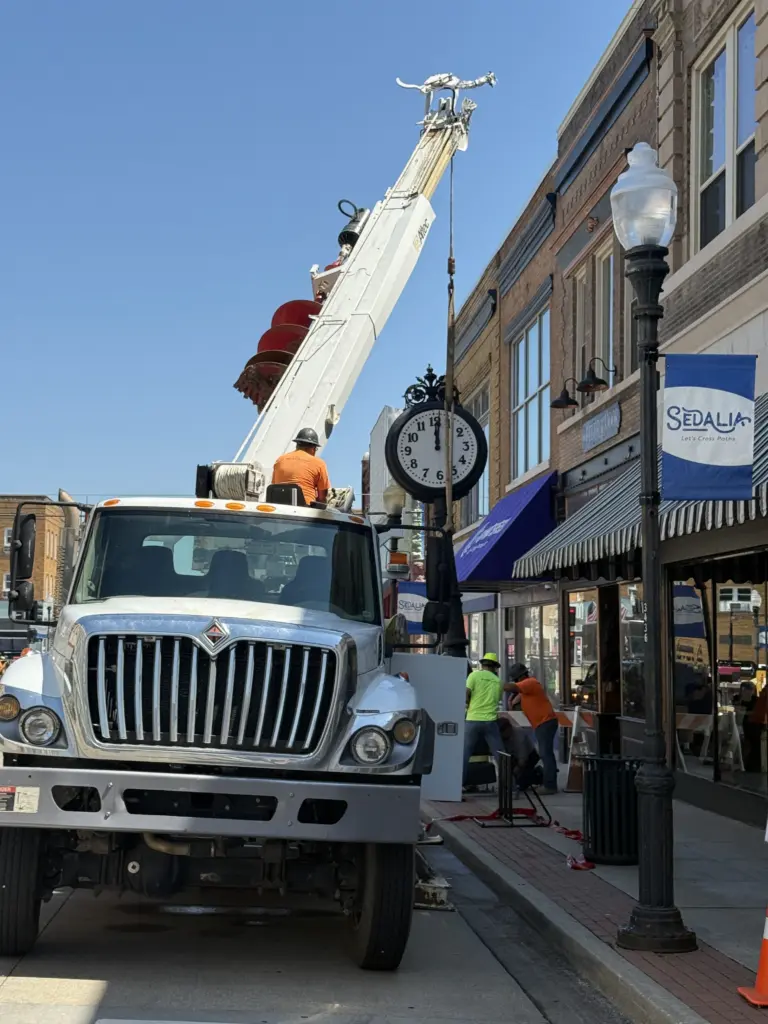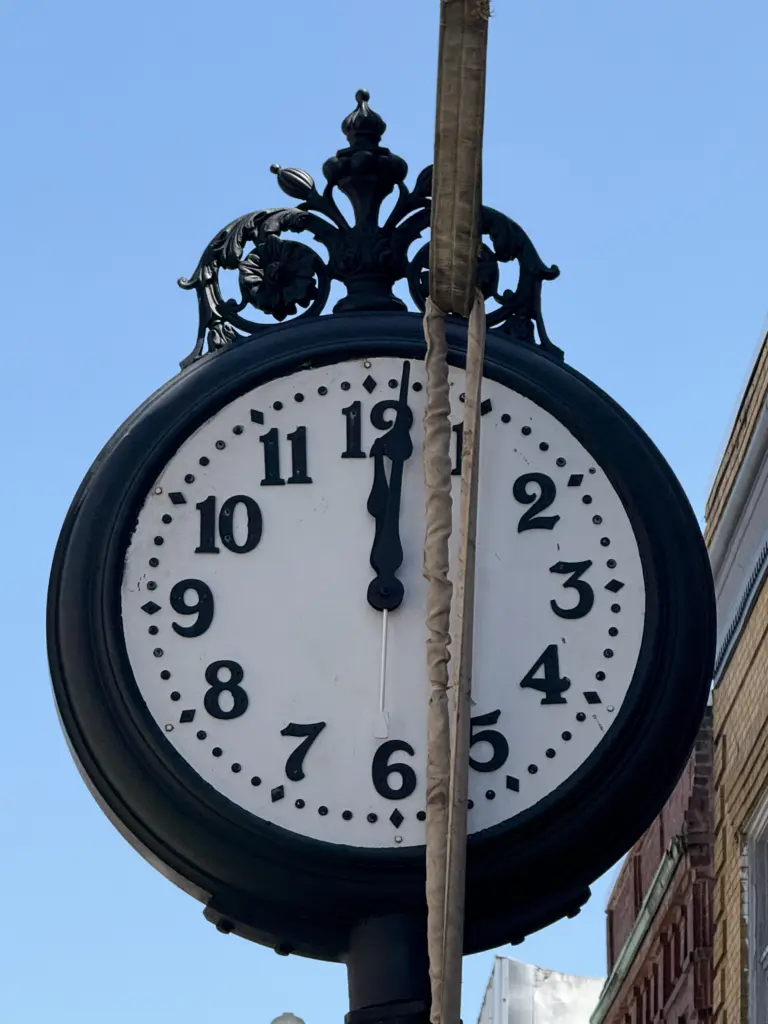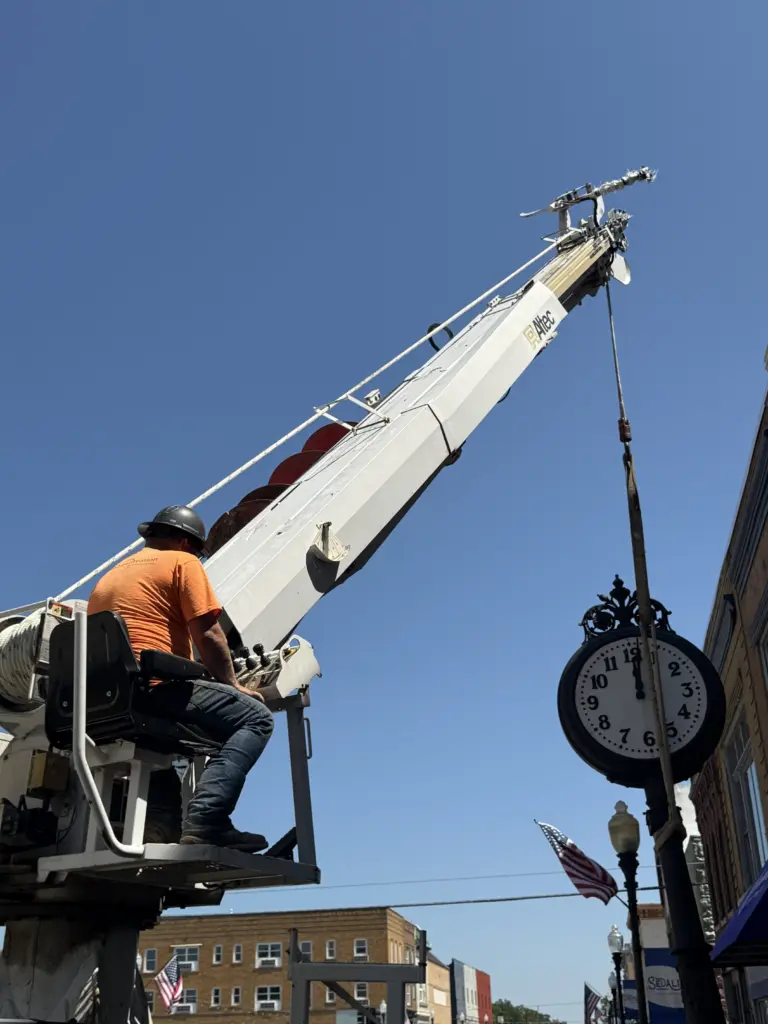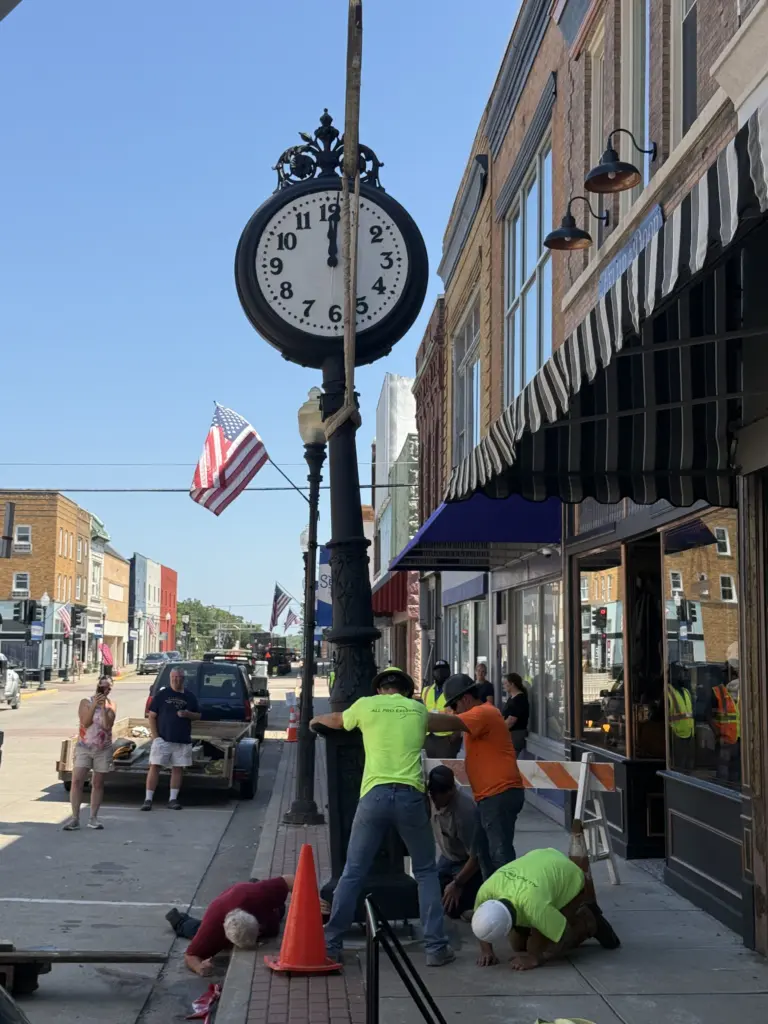
A treasured Sedalia landmark is once again marking time for downtown visitors. The historic Bichsel Jewelry street clock — first erected in 1882 — has been successfully installed on South Ohio Avenue, returning to its rightful place as a beloved symbol of the city’s enduring heritage. The restoration and relocation of the clock were made possible through a generous donation accepted by the Sedalia City Council earlier this year from Robert Walters, with the support of longtime Bichsel Jewelry owner Mark Callis. The City of Sedalia committed to managing the labor and costs required to move, restore, and maintain this cherished timepiece.
Originally placed outside Charles Taylor’s jewelry store at 109 South Ohio, the ornate cast-iron clock cost $400 in 1882—equivalent to more than $11,600 today. It was later purchased in the 1890s by Bichsel Jewelry, one of Sedalia’s oldest and most respected businesses, and moved with the store as downtown evolved.
“This isn’t just a clock—it’s a monument to our city’s spirit and history,” said Interim City Administrator Matthew Wirt. “We’re thrilled to see it back downtown, where it belongs. It stands as a reminder of the entrepreneurs and craftspeople who helped build Sedalia into what it is today.”
The clock’s return also celebrates the remarkable legacy of George Bichsel, Sr. (1831–1900), the Swiss-born master watchmaker who founded Bichsel Jewelry in 1865. After immigrating to the United States—possibly with the Gruen Watch Co.— or working for the Missouri Pacific Railroad in St. Louis maintaining their timepieces, Bichsel moved to Sedalia, opening his first repair bench inside W.E. Bard Drug Co. on Main Street before establishing his own storefront on Ohio.
In late 1877, Bichsel crafted an extraordinary five-dial pocket watch capable of indicating the hour, minute, day, month, and year. Credited as the first watch of its kind made west of the Mississippi River, it is also believed to be the first five-dial watch built in the United States. He patented the regulator for this innovation in 1878.
The Sedalia Weekly Bazoo reported in 1879 that the watch was valued at $250 at the time (over $7,500 today). Only a couple of these groundbreaking timepieces are known to survive, highly prized by collectors.
George Bichsel’s sons, Emil and George Jr., continued the business after his death, carrying its reputation for fine craftsmanship well into the 20th century. Though Bichsel Jewelry has now closed its doors, the installation of its iconic clock ensures the family’s legacy will continue to enrich the downtown district for generations to come.
The City of Sedalia sees the return of the clock as an essential piece of its downtown revitalization efforts, combining historic preservation with community pride. It is more than a functional timepiece — it’s a symbol of Sedalia’s resilience, ingenuity, and respect for its past.
Residents and visitors alike are invited to visit the newly installed landmark on South Ohio Avenue, celebrate Sedalia’s rich history, and reflect on the generations who have watched the city grow and change under the watchful eye of this enduring clock.













